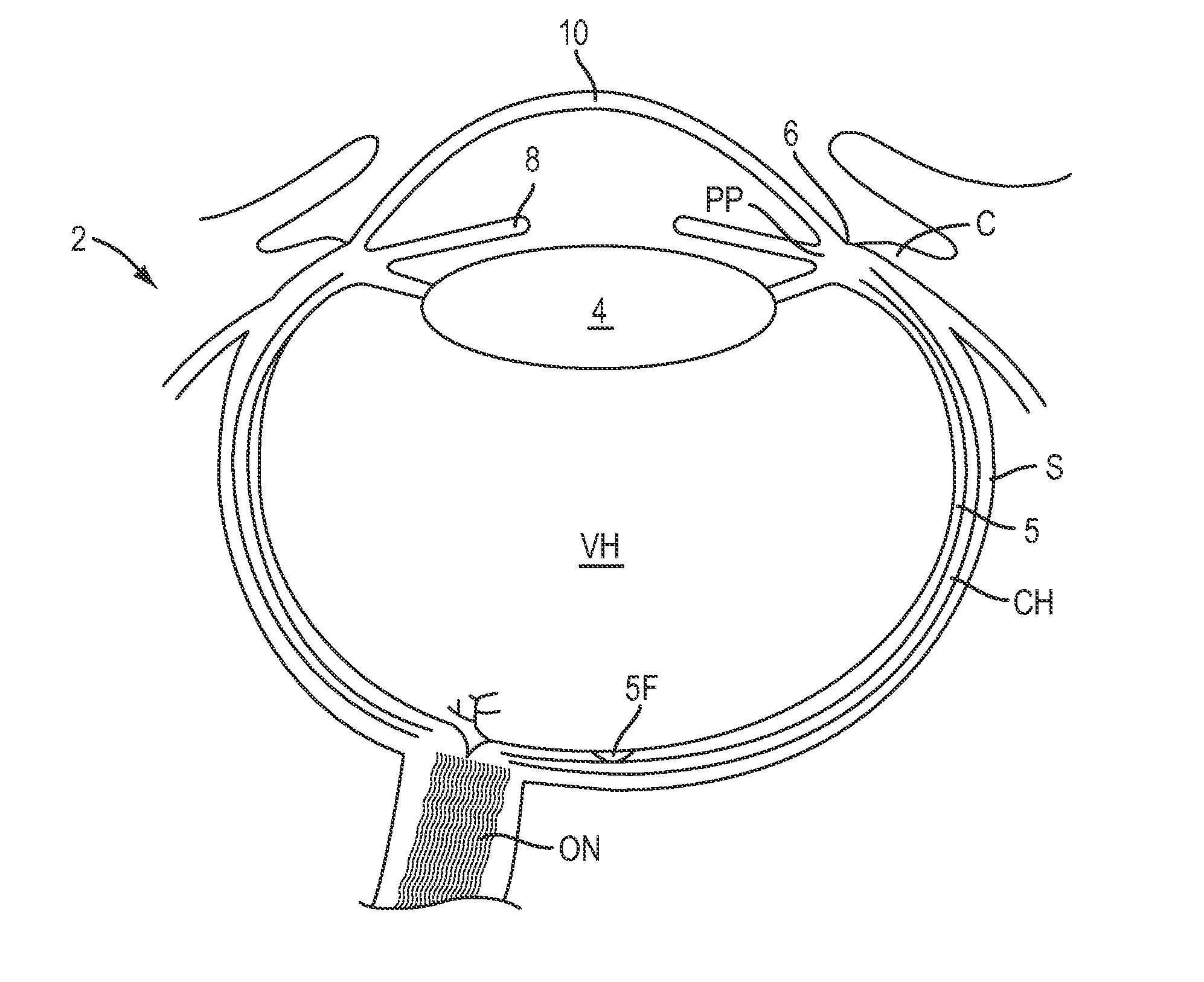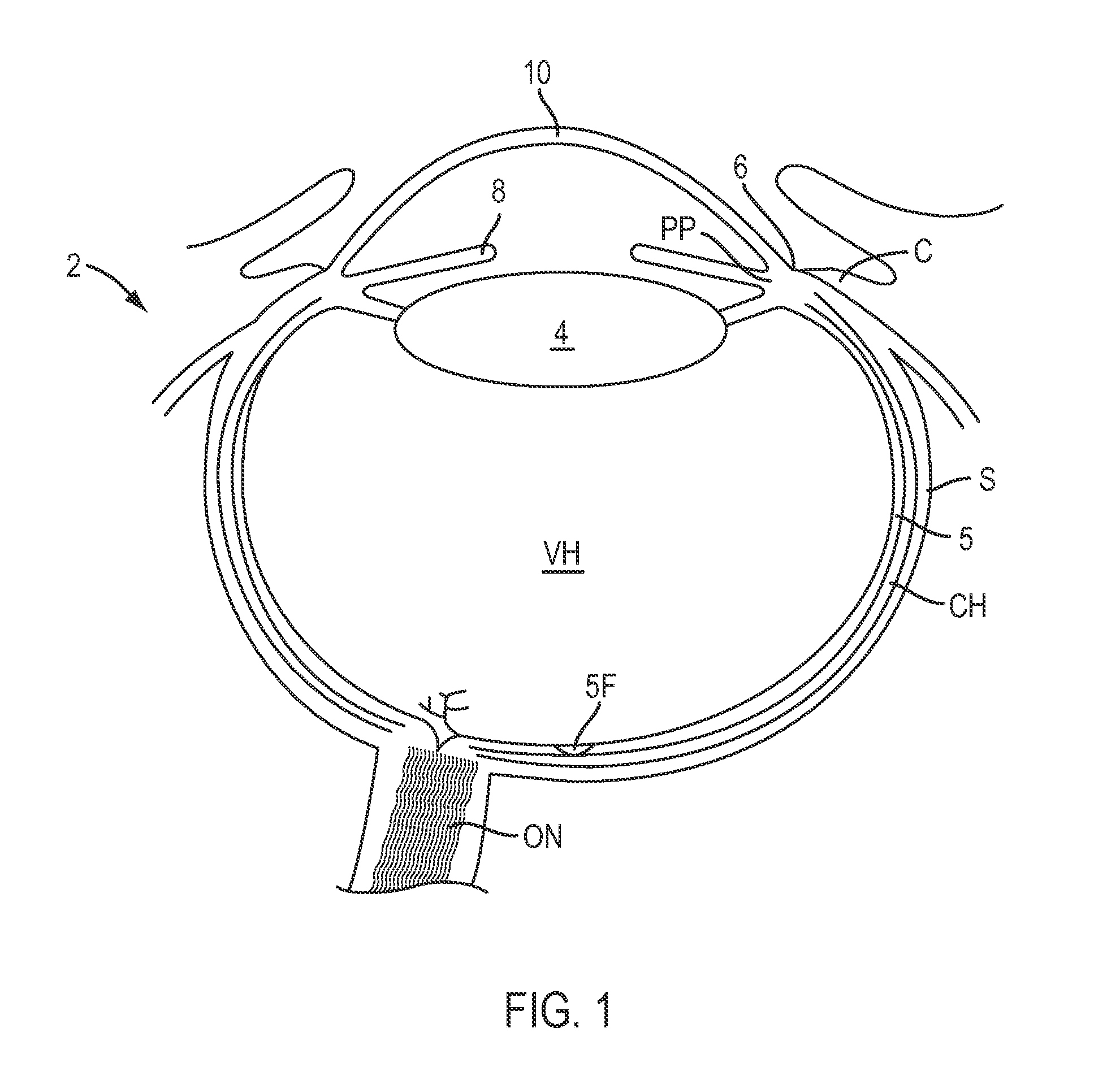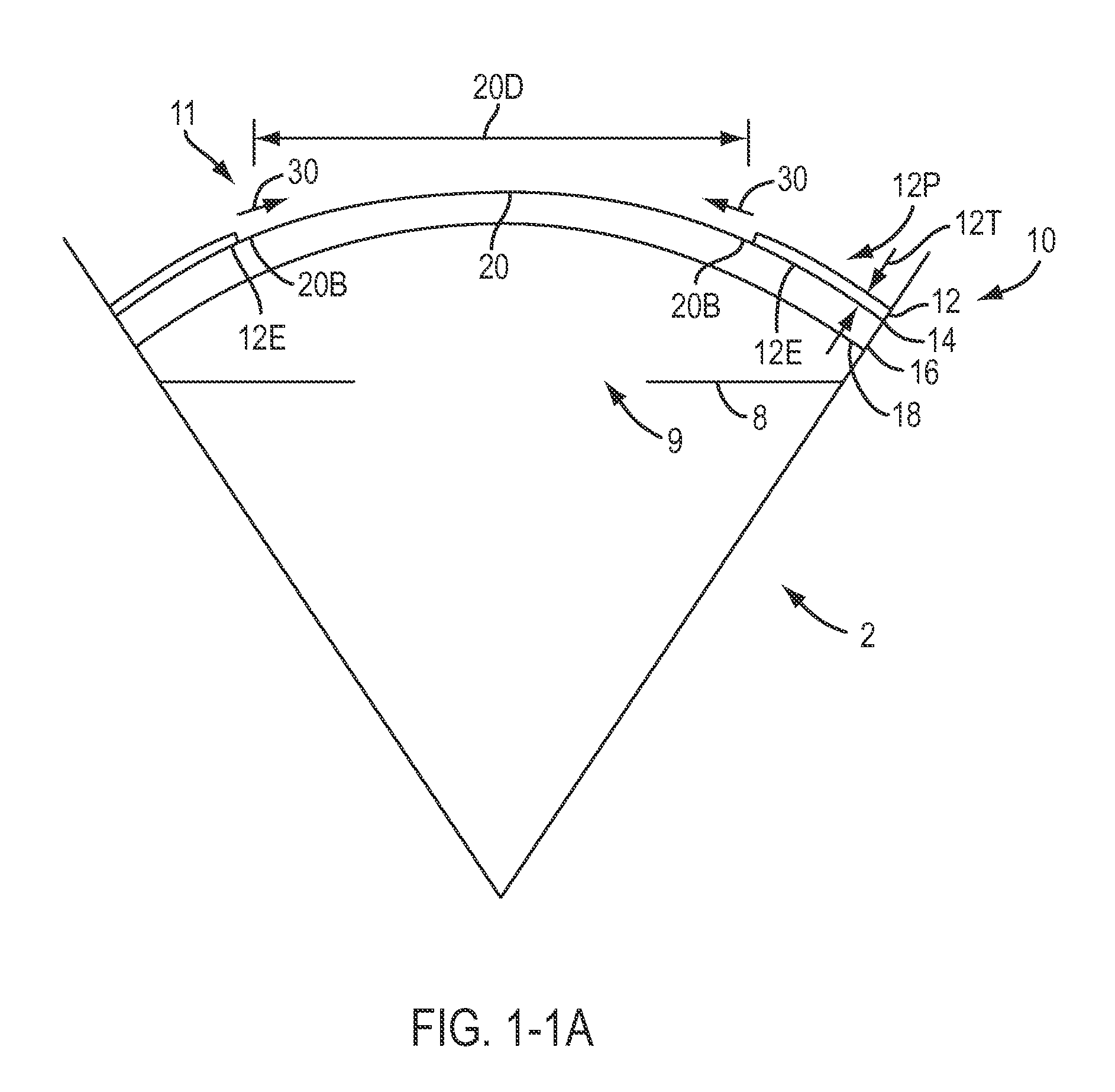Contact lenses for refractive correction
a technology for refractive correction and contact lenses, which is applied in the field of contact lenses for refractive correction of the eye, can solve the problems of time-consuming and awkward fitting of lenses, less than ideal vision of patients, and reduced vision of patients, so as to improve the resistance to deflection of the deflectable outer, improve the effect of tear flow and improve vision
- Summary
- Abstract
- Description
- Claims
- Application Information
AI Technical Summary
Benefits of technology
Problems solved by technology
Method used
Image
Examples
example 1
[0386]A subject requiring an optical correction of −2.63 Diopters (OD) and −2.13 Diopters (OS) characteristic for a subject having myopia wore ophthalmic lenses on both eyes for (very roughly) about 40 hours. The inner and peripheral radii of curvature for the ophthalmic devices are provided in Table 1. After about 40 hours, the ophthalmic lenses were removed and the amount of optical correction (Diopters) need to correct vision was determined at various times. The amount of optical correction (Diopters) needed after the ophthalmic lens was removed from the subjects is presented in Table 2.
TABLE 2Amount of optical correction (Diopters) needed after wearing an ophthalmic lens.AmountofRadii ofcorrectioncurvature forneededophthalmic lens(prior toInnerPeripheralshieldCurveCurveTime following ophthalmic lens removalwear)(degrees)(degrees)5 min2 hr4 hr8 hr24 hr30 hr48 hrSubject−2.6339.543.0−0.63+0.13+0.13NM−0.50−0.75−1.25#1 ODSubject−2.1339.541.5−0.63−0.13NMNM0.000.00−2.38#1 OS*NM = No Me...
example 2
[0387]A subject requiring an optical correction of +0.13 Diopters (OD) and +0.25 Diopters (OS) characteristic for a subject having hyperopia wore ophthalmic lenses on the right eye for (very roughly) about 35 hours, and on the left eye for (very roughly) about 17. The inner and peripheral radii of curvature for the ophthalmic devices are provided in Table 2. After about the specified number of hours, the ophthalmic lenses were removed and the amount of optical correction (Diopters) need to correct vision was determined at various times. The amount of optical correction (Diopters) needed after the ophthalmic lens was removed from the subjects is presented in Table 3.
TABLE 3Amount of optical correction (Diopters) needed after wearing an ophthalmic lens.AmountofRadii ofcorrectioncurvature forneededophthalmic lens(prior toInnerPeripheralshieldCurveCurveTime following ophthalmic lens removalwear)(degrees)(degrees)5 min2 hr4 hr8 hr24 hr30 hr48 hrSubject+0.1339.543.0−2.38−3.13−3.37−2.00NMN...
example 3
[0388]A subject requiring an optical correction of −6.00DS-2.25DCX170 for the right eye (OD) and −6.50DS-2.50DCX005 for the left eye (OS). The K value for the right eye was 45.9 / 44.2 corresponding to a ΔK consistent with a 1.70DC corneal cylinder, and the K value for the legt eye was 46.6 / 44.3 corresponding to a ΔK consistent with a 2.30DC corneal cylinder. With an appropriately fitted conventional lens, the visual acuity in both eyes was 20 / 20.
[0389]Following wearing an ophthalmic lens having an inner optic portion with spherical surfaces and characterized by a rigidity of about 1.1E10 MPa-μm3 and a the peripheral portion comprises a material having a modulus from about 0.01 MPa to about 10 MPa, the visual acuity when viewing with the right eye was 20 / 15-2 and with the left eye was 20 / 15.
[0390]While the exemplary embodiments have been described in some detail, by way of example and for clarity of understanding, those of skill in the art will recognize that a variety of modification...
PUM
 Login to View More
Login to View More Abstract
Description
Claims
Application Information
 Login to View More
Login to View More - R&D
- Intellectual Property
- Life Sciences
- Materials
- Tech Scout
- Unparalleled Data Quality
- Higher Quality Content
- 60% Fewer Hallucinations
Browse by: Latest US Patents, China's latest patents, Technical Efficacy Thesaurus, Application Domain, Technology Topic, Popular Technical Reports.
© 2025 PatSnap. All rights reserved.Legal|Privacy policy|Modern Slavery Act Transparency Statement|Sitemap|About US| Contact US: help@patsnap.com



